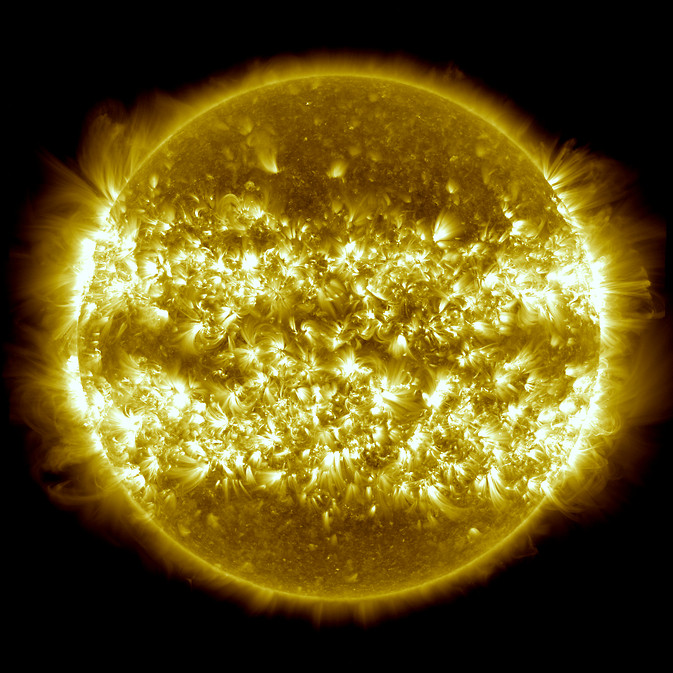Solar Bright Spots Tied to Magnetic Activity Explains Solar Cycle in New Theory

Scientists have picked on 'bright spots' in the solar atmosphere as the new markers to track the course of the solar cycle, says Nasa.
Solar activity has been seen to peak every 11 years when sunspots and flares become pronounced and many, throwing out particles and radiation into the space around. But observations of the solar cycle have shown it to vary between 9 to 14 years.
There have been many unanswered questions too. Why do the sunspots only appear lower than about 30 degrees? What causes the sunspots of consecutive cycles to abruptly flip magnetic polarity? Why is the timing of the cycle so variable?
Researchers now think the bright spots are closely connected to the magnetic activity deep inside the sun.
Sunspots have been used to mark the solar cycle. These are areas of intense magnetic field which have been measured accurately from 90 million miles away on earth.
"But the processes that make sunspots are not well understood and far less, those that govern their migration and what drives their movement. Now we can see there are bright points in the solar atmosphere, which act like buoys anchored to what's going on much deeper down. They help us develop a different picture of the interior of the sun," said Scott McIntosh, a space scientist at the National Center for Atmospheric Research in Boulder, Colorado, and first author of a paper on these results that appeared in the September 1, 2014 issue of the Astrophysical Journal.
Over the course of a solar cycle, the sunspots tend to migrate progressively lower in latitude, moving toward the equator.
The existing theory is that two symmetrical, grand loops of material in each solar hemisphere move like conveyor belts from the poles to the equator where they sink deeper down into the sun and then make their way steadily back to the poles. These also carry the magnetic field through the churning solar atmosphere. The theory suggests that sunspots move in synch with this flow.
The scientists began tracking the size of different magnetically balanced areas on the sun and found magnetic parcels in sizes seen before, as well as larger parcels about the diameter of Jupiter. Bright spots of extreme ultraviolet and X-ray light prefer to hover around the vertices of these large areas.
They then collected information about the movement of these features over the past 18 years of available observations from the joint European Space Agency and Nasa Solar and Heliospheric Observatory and SDO.
They found that these bands also moved steadily toward the equator over time, along the same path as sunspots, but beginning at a latitude of about 55 degrees.
Each hemisphere of the sun usually has more than one of these bands present and the differently polarised magnetic material once formed steadily move toward the equator from high latitudes.
Along with them, the bright points too gradually moved closer and closer to the Sun's equator as the solar cycle progressed.
Based on a theory that these bands move steadily towards the equator, and the field lines connecting them go from long to short, they were able to arrive at the solar maximum and minimum. They determined that the solar cycle, from start to finish, takes about 19 years on average, but can vary from 16 to 21 years.
They predict the next solar cycle will start towards the end of the year 2017 with sunspots appearing near the end of 2019.
© Copyright IBTimes 2025. All rights reserved.





















